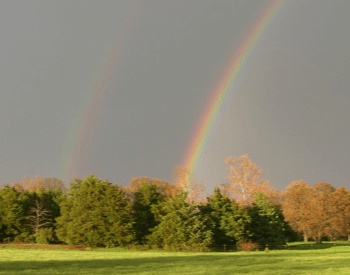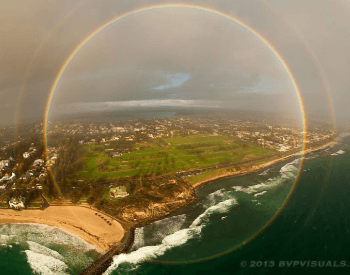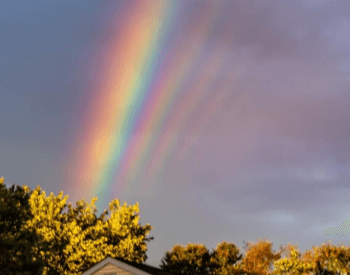
This web page contains rainbow facts for kids and is a great resource for anyone of any age researching rainbows. Our goal is to provide you with the latest and most accurate rainbow facts from scientific sources. In addition to rainbow facts, you’ll find some pretty rainbow pictures and additional resources for researching rainbow.
The facts about rainbows listed below will help you learn what a rainbow is, what causes a rainbow to color, the colors of a rainbow, the different types of rainbows and other interesting rainbow facts. We hope these facts about rainbows are helpful and help you learn more about this beautiful meteorological event.
If any of the below rainbow facts are inaccurate, please contact us and let us know.
17 Rainbow Facts for Kids
- A rainbow is a meteorological phenomenon that occurs in the Earth’s upper atmosphere.
- A rainbom is a multi-colored circle caused by a spectrum of light that is reflecting, refracting, or dispersing through water droplets in the Earth’s atmosphere.
- The shape of a rainbow is a circle. We see them as an arch because we’re viewing it from the ground.
- The visible arch of a rainbow is always 42°.
- A rainbow is an optical illusion of light and water in the atmosphere. You can’t physically touch a rainbow.
- Rainbows can appear before, during or after fog, rain, mist or dew.
- There are nine common types of rainbows.
- The nine common types of rainbows are primary rainbow, double rainbow, twinned rainbow, full-circle rainbow, supernumerary rainbow, reflected rainbow, monochrome rainbow, higher-order rainbow and fogbow.
- A primary rainbow is the most common type of rainbow seen in the sky.
- A double rainbow is when two rainbows occur together, with one above the other.
- A full-circle rainbow is viewable from an aircraft and lets you see the full shape of a rainbow.
- There are seven colors that the human eye can see in a rainbow.
- The seven colors the human eye can see in a rainbow are red, orange, yellow, green, blue, indigo and violet.
- Kids are taught a mnemonic to help them remember the colors of a rainbow.
- The mnemonics taught to kids to help them remember the colors of a rainbow are ROYGBIV or ROY-G-BIV.
- Astronomers think it’s possible for rainbows to occur on Titan, one of Saturn’s moons.
- Greek philosopher and polymath Aristotle was the first person to try and explain rainbows.
Rainbow Pictures






Additional Resources for Rainbow Research
- Rainbows on Wikipedia – Get more rainbow facts for kids and other useful information about rainbows on the Wikipedia website.
- Rainbows on National Geographic – Learn more about rainbows and view some awesome pictures of different types of rainbows.
- What Causes a Rainbow? – Find out what causes a rainbow on the SciJinks website.
- Rainbow Science – Read about the science behind the formation of a rainbow.
